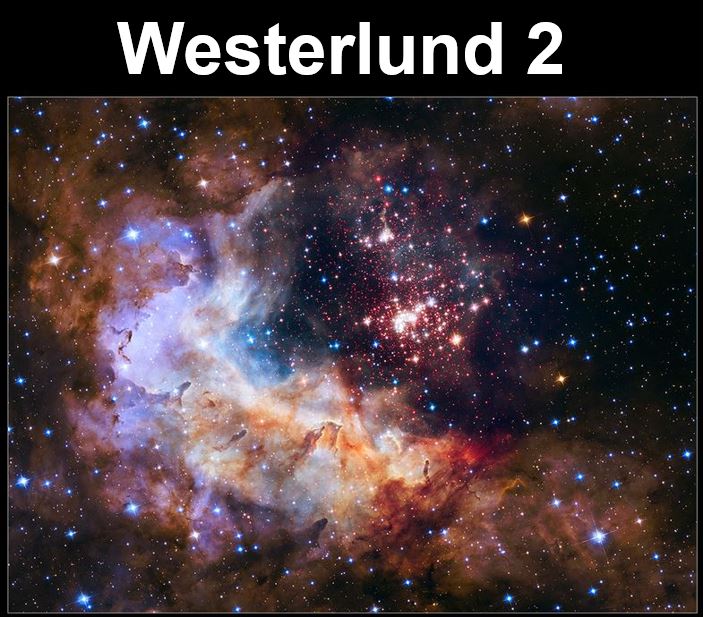The Hubble Space Telescope is 25 years old today. On 24th April, 1990, it was launched into low Earth orbit on Space Shuttle Discovery. Since then, it has recorded some of the most detailed visible-light images ever, giving us a deep view into space and time.
Several Hubble observations have led to major breakthroughs in astrophysics, such as precisely determining how fast the Universe is expanding.
It was built by NASA and the European Space Agency (ESA), and is operated by the Space Telescope Science Institute.

The brilliant tapestry of young stars flaring to life resemble a glittering fireworks display in the 25th anniversary of the Hubble Space Telescope. (Image: NASA)
Celebrating with space fireworks
ESA and NASA are celebrating the Hubble Space Telescope’s (HST’s) silver anniversary in space by showing us some of nature’s own fireworks – a massive cluster of around 3,000 stars called Westerlund 2.
The star cluster is located in a vibrant stellar breeding ground – where new stars are formed – called Gum 29, which is about 20,000 light years from Earth, in the constellation Carina.
The cluster is two million years old, which in the world of astronomy is very young. It contains some of our galaxy’s (Milky Way’s) brightest, hottest, and biggest stars.
The most massive stars are releasing a torrent of ultraviolet light and hurricane-force winds that etch away the hydrogen gas cloud that envelopes them. “This creates a fantasy celestial landscape of pillars, ridges, and valleys,” says NASA.
It is very difficult to properly observe the stellar nursery because it is surrounded by dust. However, this picture became possible because images from Hubble’s Advanced Camera for Surveys (in visible light) were combined with those from the Wide Field Camera 3 (at near-infrared wavelengths).
The European Space Agency wrote regarding the image:
“This image is a testament to Hubble’s observational power and demonstrates that, even with 25 years of operations under its belt, its story is by no means over. Hubble has set the stage for the James Webb Space Telescope – scheduled for launch in 2018 – but will not be immediately replaced by this next-generation observatory, instead working alongside it.”
“Now, 25 years after launch, is the time to celebrate Hubble’s future potential as well as its remarkable history.”
Video – Flight to Star Cluster Westerlund 2
This NASA visualization provides a 3-dimensional perspective on Hubble’s 25th anniversary image of the nebula Gum 29 with the star cluster Westerlund 2 at its core.

